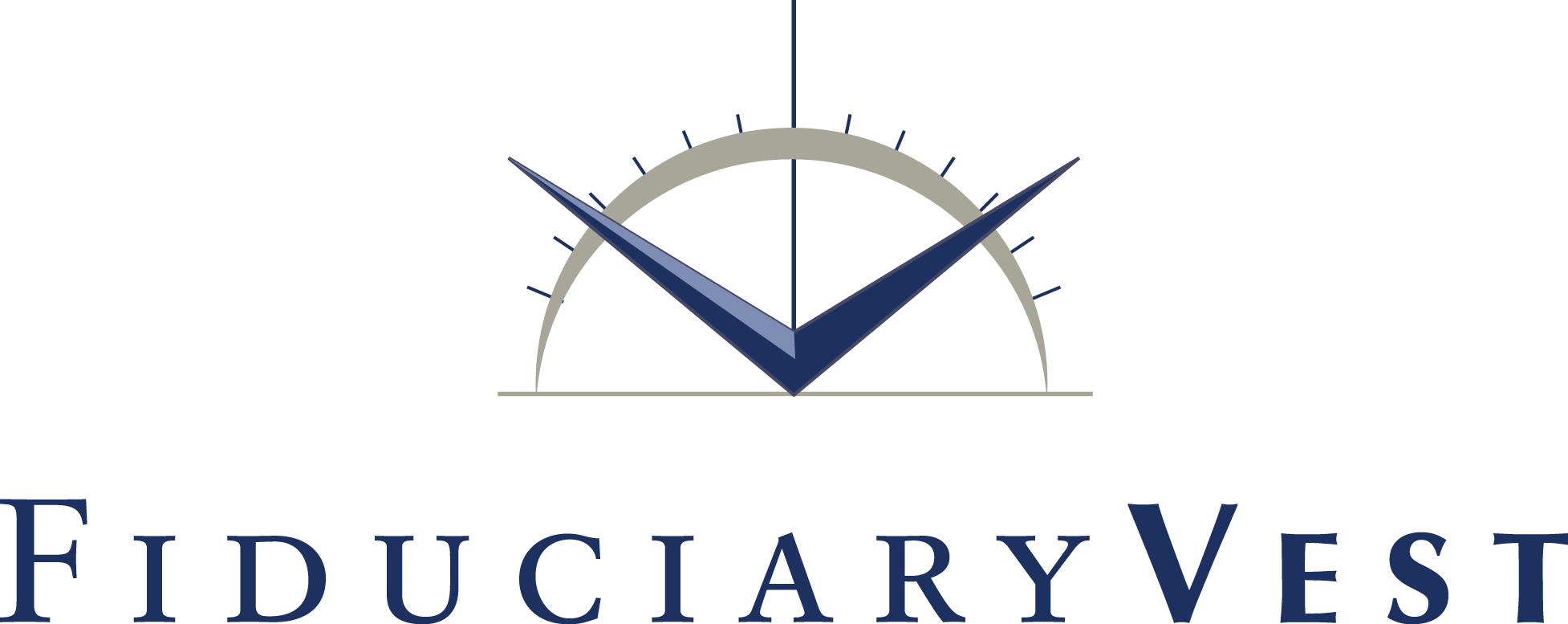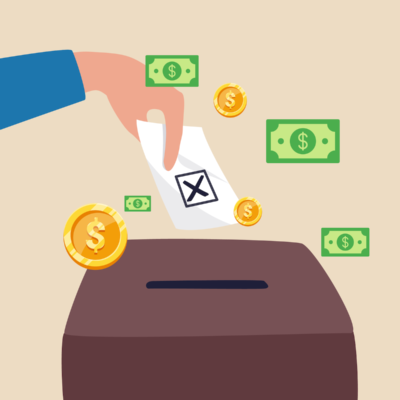
2022: Economic Uncertainty, Stress
Jobs, Jobs
In the northwest Georgia town of Calhoun, along super-busy Midwest-to-Florida Interstate 75, there is a must-see-to-believe gasoline and convenience store. Apparently, the real business of Buc-ee’s isn’t pumping the cheapest gas in Georgia from its endless array of 120 pumps. Instead, it thrives on selling its vast inventory of fast food, snacks, tee shirts, widgets, etc., etc…. very high markup stuff.
Among other businesses of its ilk, Buc-ee’s is perhaps the largest and its inventory of employees has fallen well short of its needs…. so much so that the flyer below is now posted on each of those 120 gas pumps. Please read every word. Especially the ones near the bottom. The extraordinary aspect of Buc-ee’s blind offer is not so much the robust hourly rates, but the white-collar style benefits included.
Perhaps the Buc-ee’s offer is a caricature of the current Great American Worker Shortage, but it is real, and it isn’t likely to be a thing of the past very soon. Let’s keep in mind that none of the jobs on this poster appear to involve dirty, high stress, or physically tortuous duties. And we assume that this finely detailed, blind job offer is probably not Buc-ee’s initial poster; more likely this is the third, or fourth version that probably represents its “desperation round” of offers.

So, what causes this level of apparent disinterest in perfectly respectable work, among hourly-paid folks who have surely never seen, nor imagined such fat terms of employment?….. “3 weeks paid time off, use it, cash it, roll it”!! [No doubt, there are some catches, probably involving longevity of employment, in order to realize the benefits. On the flip side, it will be very difficult for Buc-ee’s to back away from these terms for new employees, when/if the market normalizes.]
Here are some primary reasons we have noted for the US’s unfilled job openings predicament:
- After the early 2020 all-hands lockdown, fear of Covid infection at one’s job has been a major deterrent to physical returns to the workplace, coupled with
- Long term enriched federal unemployment benefit checks in 2020 and the over-the-top American Recovery Plan checks in March 2021 combined to provide a stay-home incentive for many whose jobs cannot be done online.
- Because of widespread, persistent public (but not private) school shutdowns, home childcare is still keeping many parents from returning to their jobs. Home schooling has multiplied on the wings of newly built software designed for that purpose. Education difficulties are a particularly prominent reason why one parent no longer holds a job, when the other parent can provide an adequate income.
- A huge chunk of employees in the travel and hospitality industries still has its jobs in layoff status. Before the Omicron Covid variant came to roost, the employee-intensive airline industry had begun massive recalls and recruiting efforts, but now…..??
- • Infamous, extensive and not-improving Supply Chain snarls are still causing very large number of retail and manufacturing jobs to be in suspension.
Inflation Matters
The pay scale blowout at Buc-ee’s illustrates another big kahuna in the American economy; the very sudden, very intractable rate of inflation that has struck the US is like a proverbial thief in the night. Not since 1982, 40 years ago, have we seen a 12-month inflation number that was as high as the 7.0% we got in 2021.
As we have reminded readers several times, the US Federal Reserve was chartered in 1913 to manage the nation’s currency supply in a manner that would achieve three Congressionally mandated missions…. to maintain: (1) “maximum” employment, (2) “stable” prices and (3) “moderate” long term interest rates.
This charter language is typically referred to as the Fed’s “dual mandate”. (Fed watchers and their followers have simply chosen to ignore the “moderate interest rates” mission.) The mission-words are not deemed to be literal, because each of them denotes an ongoing, routinely pursued outcome amid fluctuating economic factors. Maximum employment is not deemed a mandate to seek zero unemployment and stable prices does not imply zero percent inflation.
At the beginning of 2012, Fed Chair Ben Bernanke pushed for and got a first-time definition of stable prices. From that point on, the Fed resolved to pursue a specific inflation percentage target. The logic behind creating an inflexible inflation target was mushy and controversial among academics, but the underlying notion was that the Fed needs wiggle room between (a) a negative inflation rate (i.e., deflation, a hallmark of economic depressions) and (b) an inflation figure so much above zero that it rattles every aspect of the economy. The chosen inflation sweet spot, they said, must be a continuously justifiable number that can be pursued in the name of stable prices [whether or not it actually delivers that result]. In 2012, that target rate was, and still is 2.0%. In more recent years, the Fed’s interest rate-setting committee has added a few teaspoons of above-2% fluctuation allowance, to allow for periods when the Fed expects the result will average 2.0% over some vaguely defined past and future time span. In brief: annual inflation rates aren’t deemed to be individually meaningful.
After the 2012 new-inflation-policy year, things did not go well for the Fed’s inflation-targeters. During 2013 through 2020, the inflation rate was stubbornly below target, except 2017-18 which saw it barely eke out 2.1% and 2.4% inflation.
Inflation and Interest Rates
Then, along came 2021’s increasingly rude and lusty 7.0% inflation rate which mostly compounded within the final nine months. To make matters worse, the most prominent consumable items, gasoline and groceries, were slamming American households with unthinkable price increases and empty shelves. During most of that time, Fed Chair Jay Powell (with eager help from Treasury Secretary Janet Yellen) was actively tamping down inflation expectations…. until the economy itself drove Powell to throw the Fed’s towel in and, for good measure, to publicly ban further Fed use of its recently favored phrase: “transitory inflation”. Powell’s oops-retraction has already led the Fed to speed up the planned reversal of its 12-year run of super-soft interest rates that were variously at, near, or even below 0%.
Twelve years is a long time for an unprecedented “emergency” monetary policy to be persistently pursued (except for a brief direction change in 2018 that was quickly reversed), in the face of a healthy economy that was not saddled with a significant war effort. That policy quite directly and intentionally produced robust multi-year equity market price growth and expansion of price/earnings multiples, while bond holders, many of whom are retired, had little to show from their coupon income. Some of this cheap borrowed money has often been used by corporate America to fund buybacks of their own equity shares. While the result does directly produce a bump in earnings per share, that bump does not result from an increase in the company’s net business income. Furthermore, a one-year buyback will drag on the following year’s earnings per share; hence annual buybacks are addictive and cumulatively destructive of earnings per share quality.
So, what are the inflation-management options now? The Fed’s reflex action will be to gently raise borrowing rates, an approach that has historically been too slow and timid to catch up with the Fed’s come-from-behind status. The immediate impact of interest rate-raising will likely be most heavily felt inside the home mortgage market…. a mainstay in the US economy that has provided lucrative loan processing employment to a generation of people who have never seen 30-year mortgage rates above 3.5%. [We imagine that few of them have experienced, or read about 1980s mortgage rates which, for years, were well into double-digits, even for creditworthy borrowers. It was an un-imaginable era when US Treasury bonds sported 14%+ coupons.]
Interest Rates and Equity Prices
When interest rates have been low and steady, one of the easy-to-predict consequences of a switch to rising rates is that equity prices will be negatively affected. Not only are companies and households slapped with higher borrowing costs, but there is also a strong relationship between equity prices and interest rates.

The seldom discussed, underlying math that changes equity market values is two-fold:
- Investors constantly evaluate and compare current returns available from debt investments to that of equity investments. Rising interest income from low-risk debt closes some of the gap between bonds and expected returns from risky equity investments.
- Equity market analysts calculate the fair value of publicly traded companies using a discount rate to convert the company’s expected future earnings stream into the stock’s current fair value. Most analysts use a discount rate equal to the current 10-year US Treasury yield. Rising interest rates translate* into lower fair values of equities, even for companies which continue to post about the same level of earnings. Stocks with high earnings growth rates are naturally more sensitive to changes in interest (discount) rates, while shares of companies with relatively high dividend payout rates are less sensitive.
The Fed has carefully nursed the equity market’s amazing 12-year runup by holding interest rates at such a low level that companies and individuals would have been nuts not to have taken full advantage. But it is clear that the time has finally arrived when the proverbial punchbowl must be removed. As we know and have known, the Fed’s money-creating policy has produced run-away wealth enhancement among already wealthy individuals…. so-called “income inequality” has compounded into blowout status.
Significantly rising interest rates are a fairly dependable canary for subsequently falling stock prices.
Bonds Beware
We have always promoted the use of the bond market as a reliable harbinger of major impending equity market directional shifts.
Significantly rising interest rates are a fairly dependable canary for subsequently falling stock prices. Just now, the Fed will predictably fight this built-in equity market reaction, by way of raising interest rates at a very slow, multi-year pace calculated to allow the market to adapt rather than react. The problem with that approach is that the intended inflation-cooling effect of rate-raising may get buried by Mr. Market. Such a result would not be the first time the market has refused to behave according to Fed intentions.
In brief, current bond investments face a fairly grim market value change, until the inflation-driven interest rate cycle reaches an upside plateau. The Fed must now (1) slow and halt its multi-year “emergency” money creation binge ($120 billion per month) and (2) begin selling off some of its massive, $8.3 trillion US Treasury bond and mortgage portfolio, more than $4 trillion of which was added since March 2020 (and up by almost 2,100% from $0.4 trillion in September 2008).
2022 Danger Signal: Quasi-governmental mortgage lenders Fannie Mae & Freddie Mac are at it again. The mission of Fannie and Freddie (“F&F”) has changed again. Early 2021 saw a policy switch at F&F; the revised mission is (once again) to drive low-income families out of apartments and into mortgaged private homes. The new Biden Administration almost immediately fired the Director of the Federal Housing Finance Authority and replaced him with a temporary head. The temporary director quickly declared a new mission statement: “There is a widespread lack of affordable housing and access to credit, especially in communities of color. It is FHFA’s duty through our regulated entities to ensure that all Americans have equal access to safe, decent, and affordable housing.”
Flashback. Following similar announced goals that began in the Clinton Administration and lasted through the G.W. Bush Administration, F&F had, by June 2008 amassed a portfolio of $2.5 trillion of sub-prime mortgages (so-called “liar loans”) that were typically near, or above 100% of the appraised value of the mortgaged homes. Borrowers were assured that homeowners who became unable to make their mortgage payments could simply sell the home for a price that would both pay off the mortgage and allow the owner to pocket a remaining profit. The entire “system” was based on a widely believed assumption that housing prices always rise over time. It is legitimate to conclude that the US’s fast-moving 2008 financial collapse was at least triggered by massive, fast developing defaults within F&F’s junk mortgage portfolios, which daisy chained into the sudden bankruptcy of Bear Stearns, which led to the equally sudden collapse of Lehman Bros and the Fed’s failure to pull off a Lehman rescue.
Shareholders, Stakeholders, and ESG
Wall Street, for all its foam and fury, can take credit for its inventiveness, again and again. The 22-year-old 21st Century has seen the realization of a revolutionary Digital Society made from whole cloth and ingenuity. New financial products… investment schemes offering new structures for old investment gains…. have been rolled out with steady frequency.
The 21st century has seen the realization of a revolutionary Digital Society
For example, automobiles and trucks became wheeled computers costing many times the price of 1990s vehicles (albeit payable in de-valued 21st Century dollars); the new vehicles needed far more financing horsepower, and Wall Street put its brain into overdrive. The same was true of Exchange Traded Funds (ETFs) which multiplied like rabbits, until there is almost no conceivable sub-sub-category of equity ownership that has not been ETF-ed.
For more than two decades, MSCI, Inc. operated a business of creating and selling market indexes which are necessary yardstick tools for discovering how well, or not, investment asset managers are performing. The exploding need for more detailed indexes kept MSCI humming under the oversight of Henry Fernandez, the only chairman/CEO it has ever had.
As far back as the 1980s there had been attempts at forming and distributing purpose-oriented measurement tools, such as “Catholic portfolios” used mostly by their large and numerous hospital systems that have significant investment pools. Prohibited from such portfolios were stocks of companies that did not follow the socially responsible investment guidelines for the United States Conference of Catholic Bishops.
In 2019, Fernandez made a presentation to equity analysts that perhaps marked the birth of a corporate Good-Doing wave. MSCI, according to Fernandez, was announcing its mission “…to help global investors build better portfolios for a better world.” So, long story short, MSCI now offers a plethora of evaluation reports that rate an individual company on its Environmental, Social, Governance “ESG” performance (improvement) factors and, of course, a summary rating that is now considered the equivalent of the Good Housekeeping seal among investment industry analysts and pundits.
There are about 160 firms which sell ESG rating services, but the MSCI services are estimated to represent at least 60%, maybe as much as 80% of that high-growth market niche.
Last year, Bloomberg Businessweek undertook a detailed analysis/review of 155 S&P 500 companies’ that were recently awarded ESG rating upgrades by MSCI. Some of Bloomberg’s interesting findings were:
- A company’s record on climate change rarely seemed to be weighted enough to affect the upgrade outcome.
- Just one of the 155 upgrades examined by Bloomberg Businessweek cited an actual cut in greenhouse gas emissions as a key factor. (Nearly half of the companies never disclosed their greenhouse gas emissions.)
- MSCI dropped carbon emissions from its rating evaluation of McDonalds, because, despite its gargantuan worldwide greenhouse gas emissions from its beef supply chain, it was determined that climate change neither poses a risk, nor offers “opportunities” to McDonald’s bottom line. Bloomberg found that MSCI was looking only at whether environmental issues had the potential to harm the company, not whether the company produced mitigation of risks to the planet.
- In 51 of the 155 upgrades, MSCI highlighted the adoption of ethics policies that banned behaviors that are already crimes and employment practices, such as conducting an annual employee survey that might reduce turnover. Also, kudos were awarded for adopting data protection policies (including 23 companies whose entire business is data, or software).
Surprise?
Mr. Fernandez, according to Bloomberg Businessweek, concedes that ordinary investors are blind to the fundamental fact that MSCI’s ESG ratings are about summarizing the E, S and G risks that the world poses to the companies being rated (i.e., it’s not about noting, or evaluating the risks those companies may pose to the world’s eco-systems, societies and governance).
Now comes Larry Fink, CEO of the world’s largest investment management firm: BlackRock. He has just released his annual letter to corporate CEOs. Here are a few summarizing quotes from that letter that we found to be interesting and/or controversial:
- “Stakeholder capitalism is not about politics. It is not a social or ideological agenda. It is not ‘woke’. It is capitalism, driven by mutually beneficial relationships between you [CEOs] and the employees, customers, suppliers and communities your company relies on to prosper.”
- “In today’s globally interconnected world, a company must create value for and be valued by its full range of stakeholders, in order to deliver long-term value for its shareholders.”
- “Our conviction at BlackRock is that companies perform better when they are deliberate about their role in society and act in the interests of their employees, customers, communities, and their shareholders.”
Commentary
Commentary was prepared for clients and prospective clients of FiduciaryVest LLC. It may not be suitable for others, and should not be disseminated without written permission. FiduciaryVest does not make any representation or warranties as to the accuracy or merit of the discussion, analysis, or opinions contained in commentaries as a basis for investment decision making. Any comments or general market related observations are based on information available at the time of writing, are for informational purposes only, are not intended as individual or specific advice, may not represent the opinions of the entire firm and should not be relied upon as a basis for making investment decisions.
All information contained herein is believed to be correct, though complete accuracy cannot be guaranteed. This information is subject to change without notice as market conditions change, will not be updated for subsequent events or changes in facts or opinion, and is not intended to predict the performance of any manager, individual security, currency, market sector, or portfolio.
This information may concur or may conflict with activities of any clients’ underlying portfolio managers or with actions taken by individual clients or clients collectively of FiduciaryVest for a variety of reasons, including but not limited to differences between and among their investment objectives. Investors are advised to consult with their investment professional about their specific financial needs and goals before making any investment decisions.
Investment Risk
FiduciaryVest does not represent, warrant, or imply that the services or methods of analysis employed can or will predict future results, successfully identify market tops or bottoms, or insulate client portfolios from losses due to market corrections or declines. Investment risks involve but are not limited to the following: systematic risk, interest rate risk, inflation risk, currency risk, liquidity risk, geopolitical risk, management risk, and credit risk. In addition to general risks associated with investing, certain products also pose additional risks. This and other important information is contained in the product prospectus or offering materials.
1Public equity markets re-value every traded share, every market day.





